Iranian Popular Art
Representing Iranian culture and history and intended for a Persian market, these playing cards were designed by V. Romanowski de Boncza, ordered by the Iranian government playing card monopoly at the time and printed by Thomas De la Rue & Co., Ltd, c.1937.
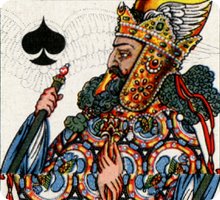
Iranian Popular Art Playing Cards
Representing Iranian culture and history and intended for a Persian market, these playing cards were designed by V. Romanowski de Boncza. The deck was commissioned by the Royal Iranian Government Playing Card Monopoly (Ministry of Finance) at the time and printed by De la Rue & Co., Ltd, c.1937. The double-ended court figures are wearing exotic Persian costumes from different dynasties.
Click to see: box ♣ reverse ♥ extra card.
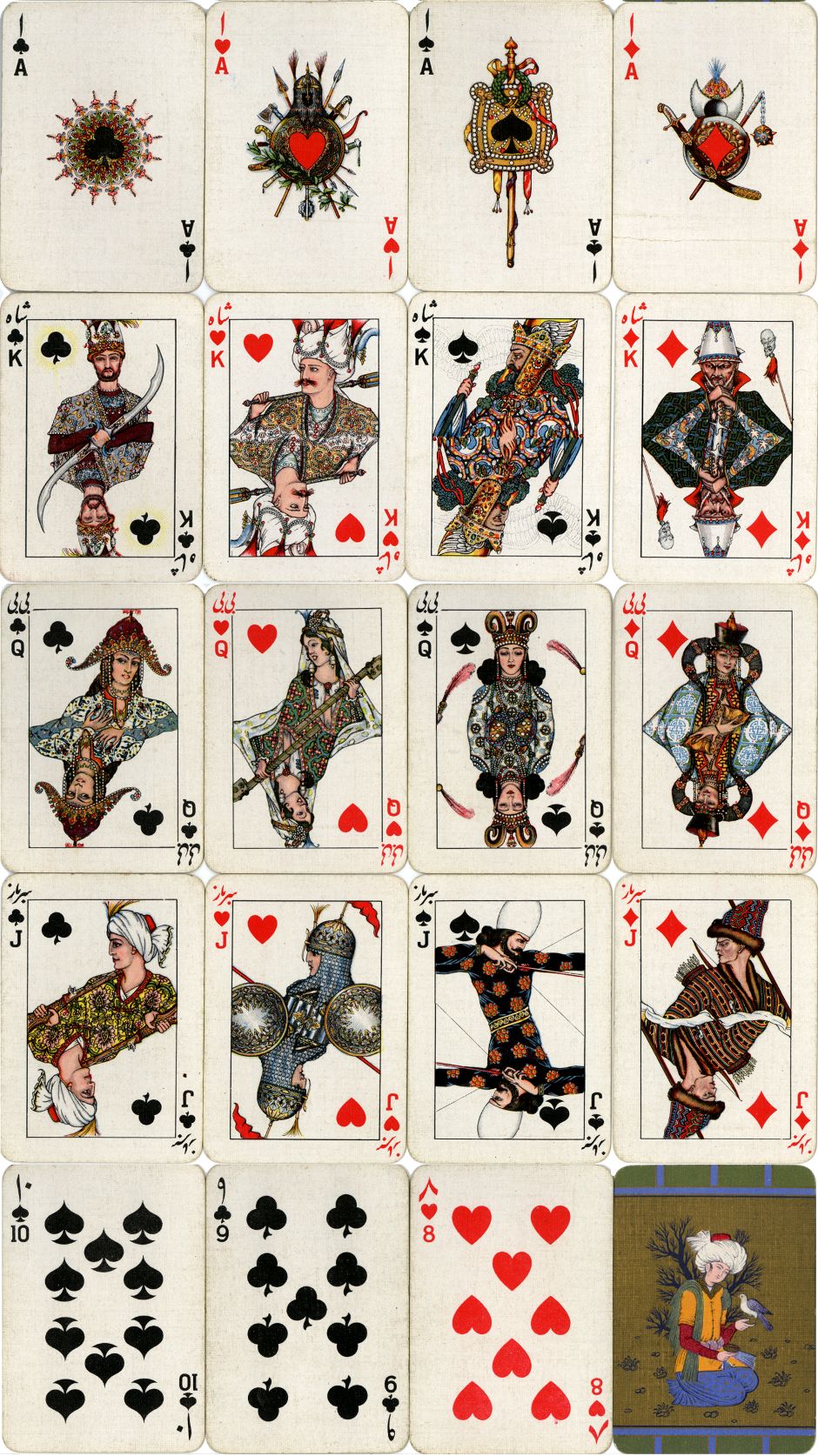
Above: 'Iranian' playing cards designed by V. Romanowski de Boncza and first printed by De la Rue in c.1937. The cards incorporate Iranian motifs and there appear to have been more than one back design as well as a patience sized version; the cards were also re-printed by Fournier in c.1962 and again at a later date with some modifications. Images courtesy Barney Townshend and Mehdi Soozande.
Reference:
Collett, Maurice: "Iranian Playing Cards" in the Newsletter of the English Playing Card Society, Vol.23 No.83, June 2005, pp.45-47.
Update from Peter Burnett
I'm attaching scans of a Fournier reprint which clearly shows the differences/modifications to the court cards (e.g KS becomes KH; QH becomes QD; new spade suit, etc.) Fournier's 1962 reprint was not a slavish copy of the De La Rue original. Many of the cards were given a 'lighter' look, e.g., KC - eyes and beard lightened, crown slightly cropped; JD - outline of chin lightened and face generally more pink. A later reprint is from c.1979 with the title "Historic Iranian Designs". The single pack also contained a leaflet►
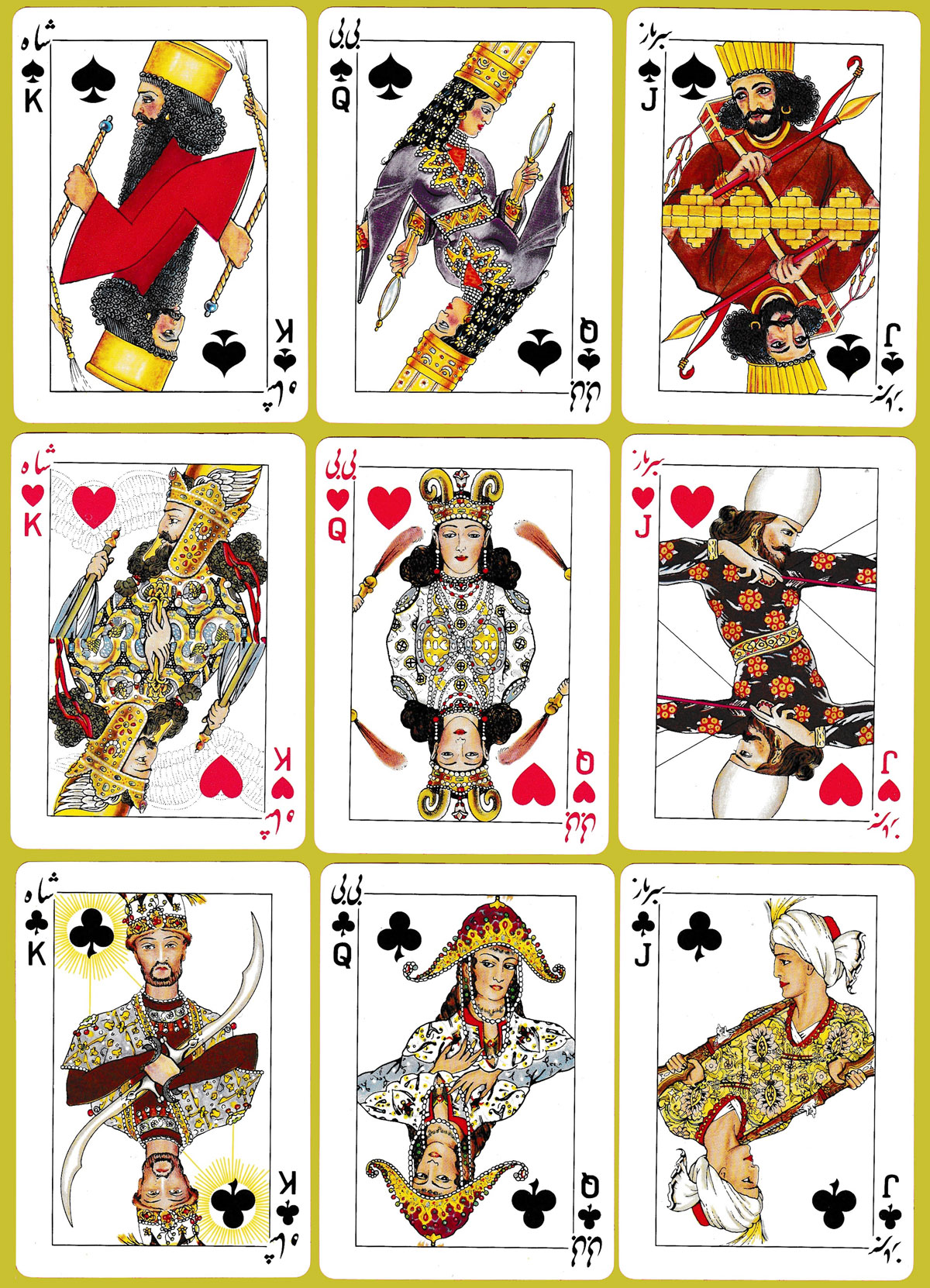
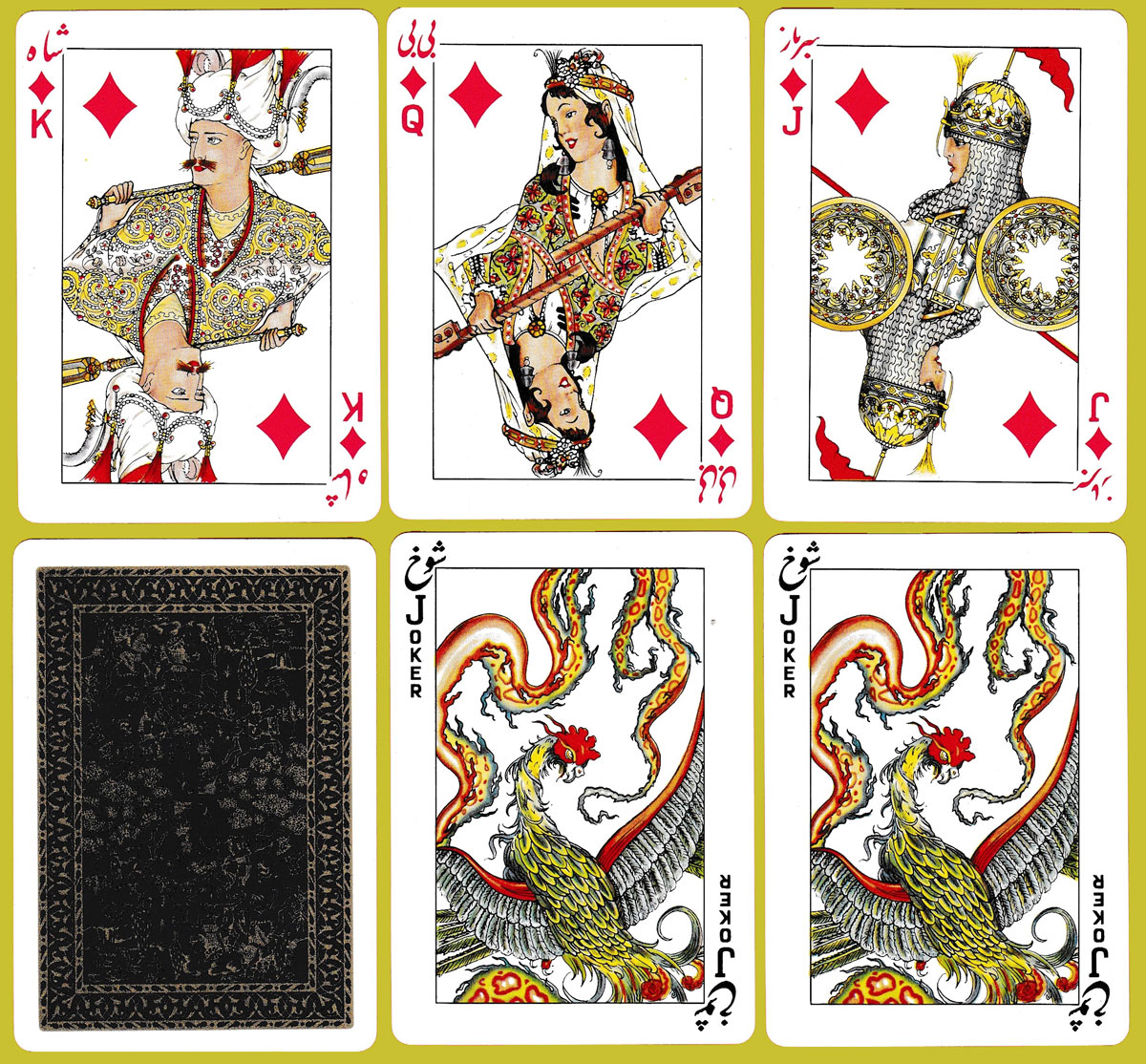
Above: Fournier reprint of Iranian playing cards. Image courtesy Peter Burnett.
What are the differences between the two reprints?
The Hearts courts and Ace were switched to Diamonds; the Diamonds courts and Ace were dropped completely; the Spades courts and Ace were switched to Hearts; the Clubs courts and Ace remained the same. Totally new designs were introduced for the 1979 Spades courts and Ace. The 1962 pack was on slightly creamier card than the 1979 one. The corners were more rounded and had more gilding than on the later pack. The 1962 pack lies flat, whereas the 1979 pack has a tendency to curve slightly over time. On the 1962 AS, one can read "MADE IN SPAIN" just above the design, whereas this is absent from the 1979 AH. On the 4C, the number '419' has been added at the foot of the design in the 1979 reprint. The back design remained the same (mine is red). Lastly, the design of the packing/control slip changed from an elaborate to a simple one - R.S.
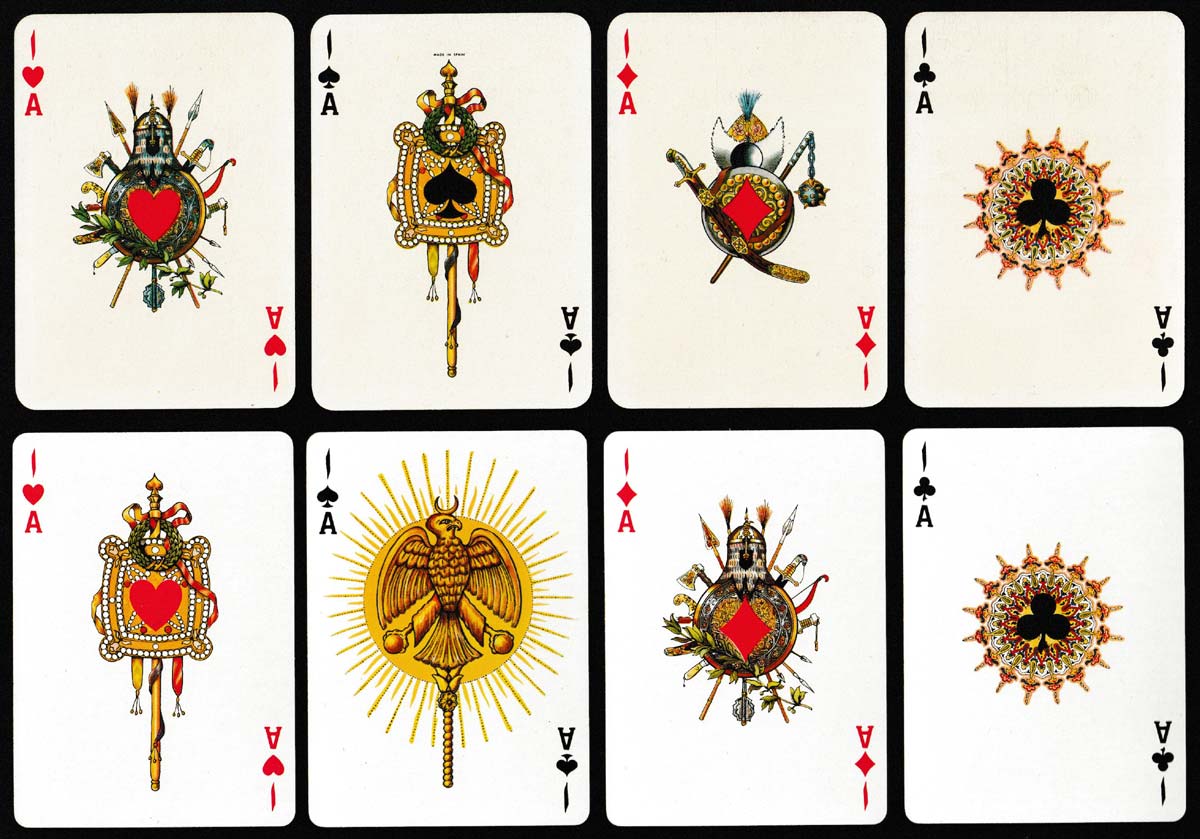
Above: Historic Iranian (1962 Aces above, 1979 Aces below). Images and notes courtesy Roddy Somerville.

By Barney Townshend
Member since October 06, 2015
Retired Airline Pilot, interested in: Transformation Playing Cards, Karl Gerich and Elaine Lewis. Secretary of the EPCS. Treasurer of the IPCS.
Related Articles

Tarot Beirut
A beautiful Arabic Tarot : a mystical tool for positive guidance and well-being.

Baraja Turística del País Vasco
Basque poker deck of 55 cards published by Fournier with scenic views of the Basque Country.

Baraja Vasca
Spanish Basque Country deck with original drawings by María Isabel Ibañez de Sendadiano.

La Baraja del Mundial
“La Baraja del Mundial” satirical football deck published by Fournier for ‘Interviú’ news magazine. ...

Simpson (Piccadilly) playing cards
Innovative advertising pack for Simpsons of Piccadilly designed by André François.

Baraja de la Cocina Española
A celebration of Spanish gastronomy, with designs by Silja Götz employing non-standard suits.

Moguls, Highlanders and Merry Andrews
Discover the historic origins and evolution of card naming and quality designations like ‘Moguls’ an...

Hand-drawn transformation cards, c1875
A complete set of hand-drawn transformation cards from c1875, using a standard De La Rue pack.

Deportivo Alavés 1921-2021
Drawings by Guillem Bosch of famous Alavés footballers in celebration of the club’s centenary.

Líneas rojas 2016
Semicaricatural images of Spanish politicians by Jordi Minguell, combined with non-standard suits. ...

Jeu des 7 familles basques
A Happy Families-type game from the Basque country, with designs by Soledad Bravi and Agathe de Las...

Why our playing-cards look the way they do
Analysis of early playing card designs: origins, suit differences, standardization, technological ad...

Manara: baraja de poker
Exotic illustrations by Italian comic book artist and writer Milo Manara.

Word Making and Word Taking
How crossword and spelling games became popular.

Alice in Wonderland
Alice in Wonderland collector’s edition with illustrations of characters from the film, published by...

Women by Royo
‘Women by Royo’ erotic playing cards published by Heraclio Fournier, Spain, 2001.
Most Popular
Our top articles from the past 28 days

